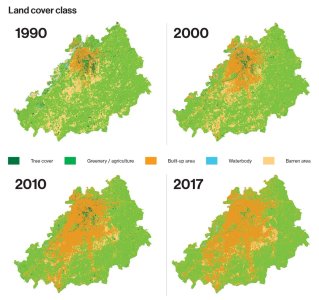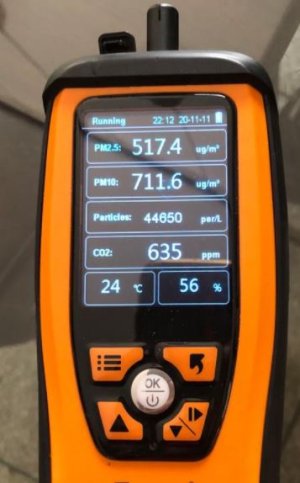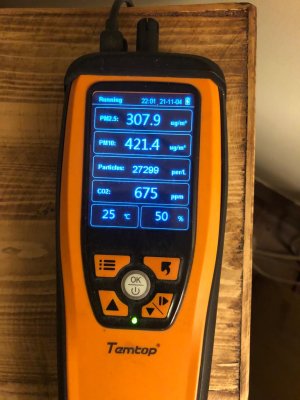Breathable Air Insides and Outsides-Lahore
"Its a Myth: The air inside your home is cleaner than the air outside.
TRUTH: According to the U.S. Environmental Protection Agency, Indoor levels of many pollutants may be 25 to 100 times HIGHER than outdoor levels. This should be a major concern given most people spend as much as 90% of their time indoors. The increased level of pollutants is due in part to homes being constructed more tightly without adequate ventilation".(Source:
http://www.derdenheatingandcooling.com/assets/mythvsfact.pdf)
Air Quality is state of air around us, Indoor Air Quality (IAQ) a term to introduce air quality within a space, maintaining the right aspects of the contents in the air to have a comfortable space around a human body. IAQ is very essential with Human Body being more prone to deadly bacteria and viruses around our comfort zone.
Poor IAQ affects can be very fatal causing, respiratory issues, fatigue, dizziness, Irritation and long terms unidentifiable problems leading to heart diseases and cancer.
Taking by example Lahore one of the most populous urban city of the world, is dealing with the worst air quality issues. The recent Smog has made it worst, this is mainly caused by the Vehicle emissions, power production and factories leading to be the main source of pollution in the lower atmosphere. “In 2012 around 7 million people died-one in eight of total global deaths-as a result of air pollution exposure. This finding more than doubles previous estimates and confirms that air pollution is now the world’s largest single environmental health risk” – World Health Organization. The same phenomenon has occurred in cities like Beijing and Delhi.
What is the solution? What factors should be applied? What precautions to be taken at personnel level?
These questions needs to be answered and while the government has not taken any swift action regarding the same tackling it as one of the same nonexistent issues, but on the long run they might have to pay for it.
· The mass solution would be to use more fuel efficient vehicles with the introduction of the hybrid vehicles things are moving on the right side but needs further implementation.
· Introducing better public transport to reduce the use of Vehicles.
· Alternate energy to be made available for the Public.
· Shifting the Manufacturing Industry to a more isolated area, where it does not affect the daily life of commuters.
· Construction Projects to be monitored by environmental Engineering personnel’s.
This is some of the steps that can be taken at mass level, which has to be implemented by the authorities to move towards a more breathable city.
What solutions can be applied at personal level to improve IAQ? , well there are many technologies available presently in the market to enhance the air quality at places like hotels, restaurants, malls and Housing.
Air Purifier: Removing contamination from the air, these are basically standalone units and are used to purify the air from the bacteria causing allergy or asthma.
Fresh Air (Ventilation): Adding fresh air to your space either through designated units or for small applications through openings to the atmosphere.
HVAC UV Lights: UV light is Nobel Prize winning invention and is being used for sterilization from ages; the application of it to HVAC industry has boosted the IAQ industry. There are two types of UV lights
· Coil Sterilization: A light is installed in the unit next to the air handling coil which sterilizes the air on coil.
· Air Sterilization: UV light installed in the return air Duct to sterilize moving air.
Benefits of Using UV light in HVAC Systems:
· Lowers energy costs by improving HVAC heat transfer and increasing the cooling capacity, reduces maintenance: continuously cleans coils and ducts.
· Improves IAQ by preventing spread of airborne microbone organisms which leads to infectious diseases.
These UV lights are now available for Split Units, which can be installed easily and is a very economical solution.
Ultraviolet Light Effective in Hospital Infection Control – In 2012, Researchers at Duke University Medical Center used ultraviolet radiation (UV-C) to nearly eliminate drug-resistant bacteria in 50 hospital rooms, reducing the number of bacteria by more than 97%.
There are many other technologies which can be used to make the Environment a more comfortable a more breathable place to live. The above mentioned are some of the solutions which can be cost effective and can be used in any kind of application.
The authorities need to step in and take matters in to their own hand by establishing centers, which take emission reading in the most affected area by monitoring constantly and produce a report on emission inventory to tackle the issues from its root.






 <a href="https://twitter.com/hashtag/India?src=hash&ref_src=twsrc%5Etfw">#India</a> is responsible for smog in <a href="https://twitter.com/hashtag/Pakistan?src=hash&ref_src=twsrc%5Etfw">#Pakistan</a>'s Punjab, says Punjab Environment Protection Minister Begum Zakia Shah Nawaz<a href="https://twitter.com/hashtag/DunyaUpdates?src=hash&ref_src=twsrc%5Etfw">#DunyaUpdates</a
<a href="https://twitter.com/hashtag/India?src=hash&ref_src=twsrc%5Etfw">#India</a> is responsible for smog in <a href="https://twitter.com/hashtag/Pakistan?src=hash&ref_src=twsrc%5Etfw">#Pakistan</a>'s Punjab, says Punjab Environment Protection Minister Begum Zakia Shah Nawaz<a href="https://twitter.com/hashtag/DunyaUpdates?src=hash&ref_src=twsrc%5Etfw">#DunyaUpdates</a








